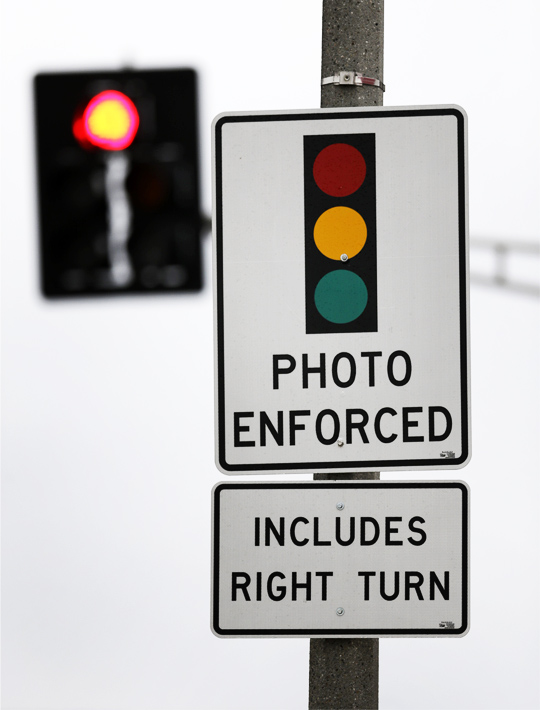BEAVERTON, Ore. (KOIN) — A Beaverton man who says he’s proven red light cameras in Oregon, Washington and around the country are setting drivers up for tickets they can’t avoid is one step closer to getting the validation he’s been seeking.
Swedish-born electronics expert Mats Jarlstrom has been on a mission for the last 3 years: He’s trying to prove that intersections with red light cameras are rigged against the laws of nature and human drivers, especially those making right hand turns.
Jarlstrom was recently invited to Los Angeles to present his research at a conference for the national organization that helps set traffic policies.

Using a GPS system to track speed, location and video, Jarlstrom got in his car and set out to see what a driver going the speed limit would encounter as they decide to make a right hand turn.
He says the yellow lights in Beaverton — where 4-6 times as many traffic tickets are written than in similar-sized cities — are not long enough for some drivers making right hand turns to stop.
“They’re only giving you the option to go straight through,” Jarlstrom said. “However, if you’re at that point and have decided to make a right hand turn or a left hand turn… you don’t have enough time and that’s what my research has proven.”
If you enter an intersection when the light is still yellow, you won’t get a ticket from a red light camera. But Jarlstrom says some drivers get caught in a no man’s land: They’ve slowed down to make a right turn on green when the light suddenly turns to yellow. They aren’t going fast enough to make it into the intersection before the light turns red, and they’re also going too fast to stop before it does.
Jarlstrom’s research led him to the original formula that was developed in 1959 to regulate how long a yellow light should be. It also led him to Professor Alexei Maradudin, one of the men who came up with it.
In a letter to the Institute of Transportation Engineers, Maradudin wrote he’s “concerned that some of our work has been taken out of context.”
“This formula… cannot be applied to turning lanes or to any situation where the driver must decelerate within the critical distance,” Maradudin wrote.
Read Maradudin’s letter to the Institute of Transportation Engineers
Jarlstrom says you can see the problem in real life by looking at the history of red light tickets in Beaverton. Until 2010, the city only issued tickets to drivers who ran red lights going straight. That year 1,759 tickets were written.
But in 2011, when Beaverton began handing out tickets for right hand turns, that number skyrocketed to 5,653 and then 7,955 in 2012. In 2015 the ratio was still lopsided: 2,062 tickets for drivers going straight and 5,538 for those turning on red.
Jarlstrom took his findings to Oregon’s Board of Examiners for Engineering and asked them to change the way traffic engineers are trained on the formula for yellow lights.
Instead, the board accused him of practicing traffic engineering without a license. He’s been under a slow-moving investigation for the last 1.5 years.
“If they don’t understand the equations that the board… are actually providing them in the fundamentals of engineering handbook, we have a problem,” he said. “I am bringing up that problem… they turn it around and want to kill the messenger.”
On Thursday, the board decided to issue a notice of intent to fine him $500 for practicing engineering without a license. Jarlstrom said he is going to fight the fine.
But what can be done to fix the problem with red light cameras? Each city could make the length of its yellow lights longer, but first, Jarlstrom has to prove he’s right.
